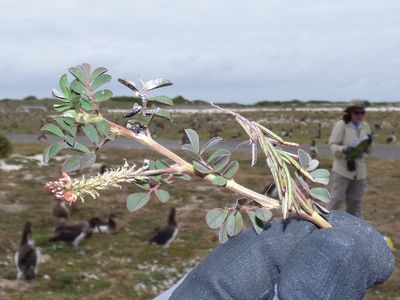About Indigo Pest Control
Indigo not only produces vivid dyes, it is also a nitrogen fixing member of the legume family. In many tropical regions, it is not only valued as “the king of dyes” but is also grown as a green manure or cover crop. In addition to being pretty resistant to insect pests, indigo is rarely grazed on by livestock or other wildlife. In tropical regions where indigo can grow into a woody perennial, it can actually become a pest itself by choking or shading out native flora. However, there are a few indigo insect pests that keep it from becoming invasive or can damage indigo crops.
Common Pests of Indigo Plants
One of the most damaging pests of indigo plants is root-knot nematodes. Infestations will appear as patches of sickly looking plants in crop fields. Infected plants may be stunted, wilted, and chlorotic. The indigo roots will have swollen galls. When attacked by root-knot nematodes, indigo plants are weakened and become highly susceptible to fungal or bacterial diseases. Crop rotation is the best method of root-knot nematodes indigo pest control. The psyllid Arytaina punctipennis is another insect pest of indigo plants. These psyllids do not cause significant damage just by eating the indigo foliage but their piercing mouth parts oftentimes carry disease from plant to plant, which can result in significant indigo crop loss. In some tropical or subtropical locations, chrysomeliad leaf beetles can significantly reduce crop yields of indigo plants. As with almost any plant, indigo plants can also become infested by aphids, scale, mealybugs, and spider mites. Crop rotation, trap crops, and chemical controls may all be integrated to ensure high crop yields of indigo plants.
